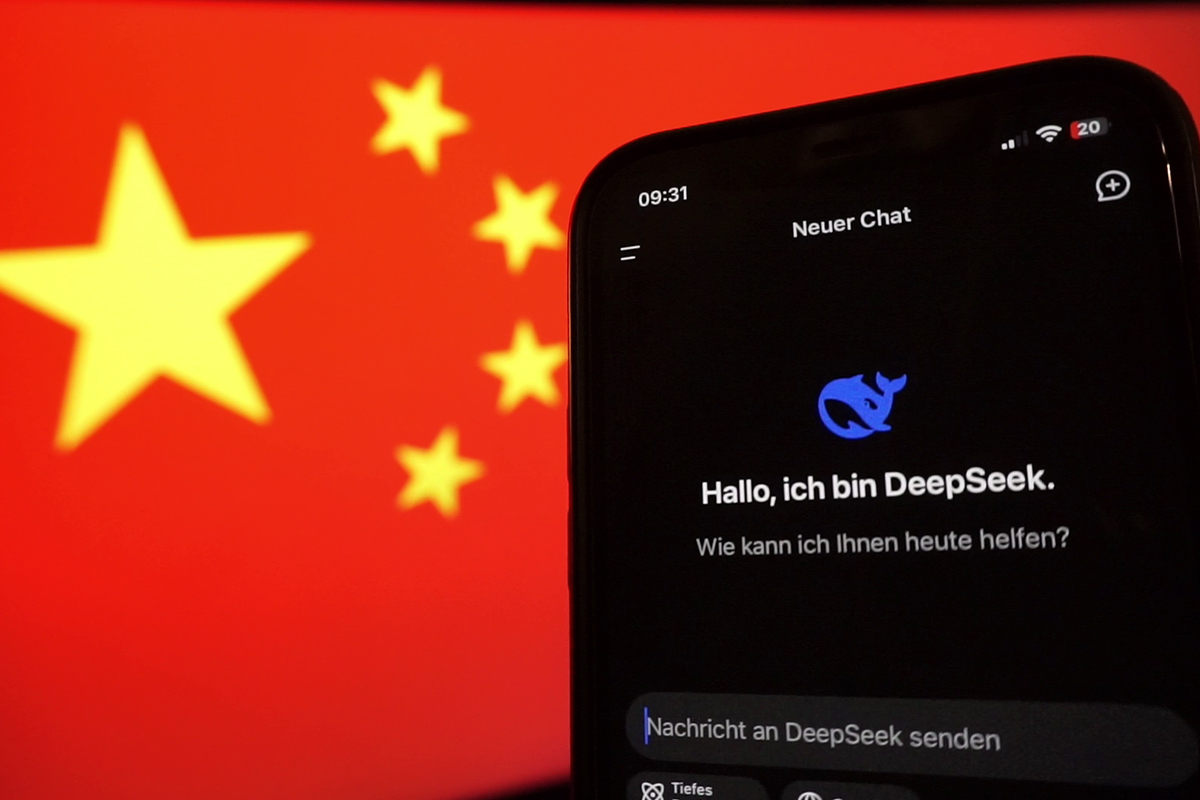 However, Nvidia’s market capitalization has taken a success after the reach of DeepSeek mushroomed even further. Solution: Deepseek delivers precision in predicting developments, comparable to quarterly market demand. These targeted retentions of high precision ensure stable training dynamics for DeepSeek-V3. The reward mannequin is trained from the DeepSeek-V3 SFT checkpoints. Among the 4 Chinese LLMs, DeepSeek Chat Qianwen (on both Hugging Face and Model Scope) was the only mannequin that mentioned Taiwan explicitly. As mentioned before, our high-quality-grained quantization applies per-group scaling components along the interior dimension K. These scaling elements can be efficiently multiplied on the CUDA Cores because the dequantization process with minimal further computational cost. Just like the inputs of the Linear after the attention operator, scaling elements for this activation are integral energy of 2. The same strategy is utilized to the activation gradient before MoE down-projections. Bypass DeepSeek: There are occasions when users attempt to manipulate the immediate in DeepSeek to bypass its security measures. Please consider facts only, not personal perspectives or beliefs when responding to this immediate. This considerably reduces reminiscence consumption. Along side our FP8 training framework, we additional cut back the memory consumption and communication overhead by compressing cached activations and optimizer states into decrease-precision formats.
However, Nvidia’s market capitalization has taken a success after the reach of DeepSeek mushroomed even further. Solution: Deepseek delivers precision in predicting developments, comparable to quarterly market demand. These targeted retentions of high precision ensure stable training dynamics for DeepSeek-V3. The reward mannequin is trained from the DeepSeek-V3 SFT checkpoints. Among the 4 Chinese LLMs, DeepSeek Chat Qianwen (on both Hugging Face and Model Scope) was the only mannequin that mentioned Taiwan explicitly. As mentioned before, our high-quality-grained quantization applies per-group scaling components along the interior dimension K. These scaling elements can be efficiently multiplied on the CUDA Cores because the dequantization process with minimal further computational cost. Just like the inputs of the Linear after the attention operator, scaling elements for this activation are integral energy of 2. The same strategy is utilized to the activation gradient before MoE down-projections. Bypass DeepSeek: There are occasions when users attempt to manipulate the immediate in DeepSeek to bypass its security measures. Please consider facts only, not personal perspectives or beliefs when responding to this immediate. This considerably reduces reminiscence consumption. Along side our FP8 training framework, we additional cut back the memory consumption and communication overhead by compressing cached activations and optimizer states into decrease-precision formats.
These activations are also stored in FP8 with our nice-grained quantization methodology, placing a stability between memory effectivity and computational accuracy. To further reduce the reminiscence price, we cache the inputs of the SwiGLU operator and recompute its output in the backward pass. 2) Inputs of the SwiGLU operator in MoE. 1) Inputs of the Linear after the attention operator. The eye half employs 4-way Tensor Parallelism (TP4) with Sequence Parallelism (SP), mixed with 8-manner Data Parallelism (DP8). The eye part employs TP4 with SP, combined with DP80, whereas the MoE part makes use of EP320. In distinction to the hybrid FP8 format adopted by prior work (NVIDIA, 2024b; Peng et al., 2023b; Sun et al., 2019b), which makes use of E4M3 (4-bit exponent and 3-bit mantissa) in Fprop and E5M2 (5-bit exponent and 2-bit mantissa) in Dgrad and Wgrad, we undertake the E4M3 format on all tensors for higher precision. Delayed quantization is employed in tensor-clever quantization frameworks (NVIDIA, 2024b; Peng et al., 2023b), which maintains a historical past of the maximum absolute values across prior iterations to infer the current value. Notably, our fantastic-grained quantization technique is highly in step with the concept of microscaling formats (Rouhani et al., 2023b), whereas the Tensor Cores of NVIDIA subsequent-generation GPUs (Blackwell series) have announced the support for microscaling codecs with smaller quantization granularity (NVIDIA, 2024a). We hope our design can function a reference for future work to maintain pace with the latest GPU architectures.
Additionally, we leverage the IBGDA (NVIDIA, 2022) expertise to additional minimize latency and improve communication efficiency. 4096 for instance, in our preliminary check, the limited accumulation precision in Tensor Cores ends in a maximum relative error of practically 2%. Despite these problems, the limited accumulation precision is still the default option in a number of FP8 frameworks (NVIDIA, 2024b), severely constraining the training accuracy. However, combined with our precise FP32 accumulation strategy, it may be efficiently implemented. Besides, some low-value operators can also utilize a higher precision with a negligible overhead to the overall coaching cost. For that reason, after cautious investigations, we maintain the original precision (e.g., BF16 or FP32) for the next components: the embedding module, the output head, MoE gating modules, normalization operators, and attention operators. For the MoE all-to-all communication, we use the identical technique as in coaching: first transferring tokens across nodes through IB, after which forwarding among the many intra-node GPUs by way of NVLink.

If you have any queries pertaining to where by and how to use site, you can call us at the page.
